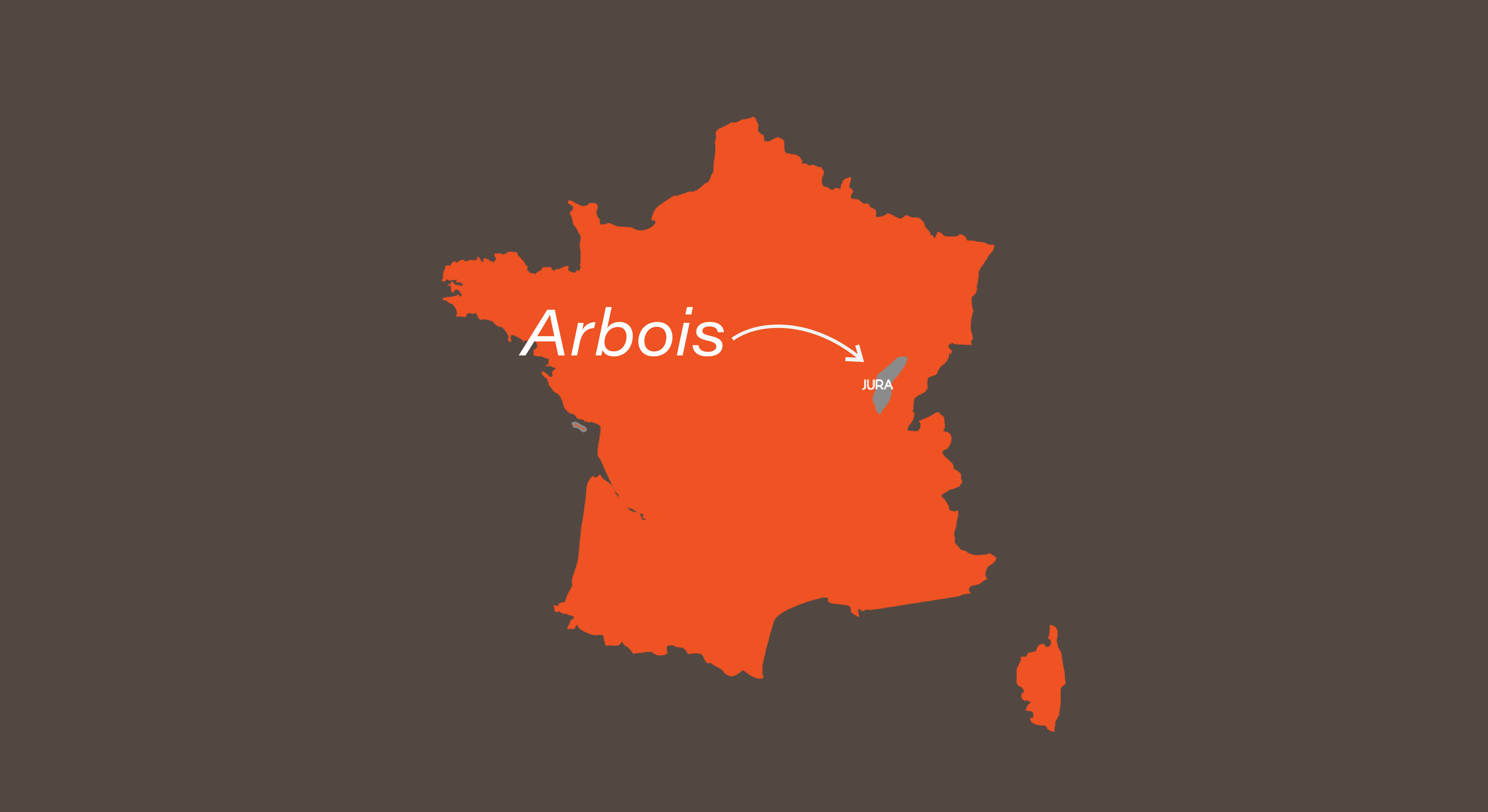
The Jura vineyards may not span a vast area, but their diversity is remarkable, stretching 80 kilometers through the Revermont region. Located at the base of the Jura mountains, these vineyards narrate tales of wines that are sparkling, vibrant, or patient; dry or sweet, captivating the soul with a rich and intricate mix of flavors, including both fresh and candied fruits, spices and marmalades, flowers and biscuits, tea, and Comté cheese. Each sip unveils hidden gems, blending local and exotic aromas with surprising, enigmatic tastes.
Thanks to their unique terroirs and traditions, coupled with expert craftsmanship and passion, Jura wines shine in bright gold and ruby, embodying excellence. They offer a spectrum of experiences – singular, generous, exotic, smooth, sweet, wild, nuanced, harmonious, light, or intense – presenting a wealth of styles for the palate to explore!
Arbois appellation
In 1936, the Jura wine region of Arbois was awarded the first French AOC label. Since then, six other AOCs have been awarded to recognize the passionate work of the region’s winemakers. In the early 20th century, after the vines had been devastated by the phylloxera aphid, they patiently recreated vineyards of superior quality, respectful of traditional practices. Today, the Jura wine region boasts four geographic AOCs and three 'product' AOCs, symbols of authenticity, rigor, and environmental friendliness.
Fun fact: The Arbois appellation, renowned for its vibrant and elegant red wines, is both the oldest and largest of the four geographic AOCs. Its name derives from the Celtic words ‘ar’ and ‘bois’, meaning ‘fertile land’. It is celebrated for producing the full spectrum of Jura wines.
Côtes du Jura appellation
Established by a decree on July 31, 1937, the Côtes du Jura appellation is the largest of the Jura appellations. Spanning from north to south of the vineyard, it offers a wide array of terroir contrasts, making it a territory ripe for exploring the diverse expressions of Jura grape varieties.
In 1937, the Côtes du Jura Appellation included about sixty municipalities; today, it encompasses 105, covering a total vineyard area of 551 hectares. The municipalities with the largest vineyard areas include Arlay, Beaufort, Buvilly, Gevingey, Lavigny, Mantry, Passenans, Poligny, Rotalier, Saint-Lothain, Toulouse-le-Château, Le Vernois, Vincelles, and Voiteur. Although all Jura products are made within the Côtes du Jura AOC, the production of white wines and Crémant du Jura predominates, characterized by round, fruity, and generous wines.
What about grape varieties?
Jura wines, known for their diverse aromas and flavors, are crafted from five grape varieties: Chardonnay, Savagnin, Poulsard, Trousseau, and Pinot Noir. The unique characteristics of each variety are subtly influenced by the terrain, microclimate, and expert blending.
Chardonnay: floral and elegant
Chardonnay, originating from Burgundy, has thrived in the Jura since the 10th century due to its adaptability, making it the most prevalent grape variety. It flourishes in light, limestone soils, yielding floral white wines with notes of citrus fruits, peaches, and white flowers. When blended with Savagnin, nuances of roasted hazelnuts or almonds emerge. Floral white wines, predominantly crafted from Chardonnay grapes, benefit from a traditional aging method that prevents air contact by 'topping off' barrels to counteract natural evaporation. These refined, elegant, and mineral-rich wines acquire exotic aromas when produced with Savagnin.
Savagnin : smooth and intense
Savagnin, quintessential to the Jura region, prefers grey marl soils and ripens slowly. It's well-suited for oxidative aging under a yeast film known as the voile, producing potent white wines with layers of fresh butter, undergrowth, almonds, walnuts, and spices. In topped-up barrels, Savagnin reveals mineral, lemon, and white flower notes. In the Jura, winemakers sometimes choose not to top off their barrels, allowing a natural headspace to form. This leads to the development of a yeast film on the surface, which imbues the wine with unique, intense flavors. This technique allows the Savagnin grape to fully showcase the distinct character of the Jura terroir. Often, it's blended with Chardonnay to add a touch of finesse to these 'traditional' wines.
Poulsard: bright and fruity
Poulsard is the second most widespread variety after Chardonnay, flourishing in robust marl or clay soils. Its thin-skinned grapes yield fresh, enjoyable wines with small red fruit hints and a notably light-ruby color. Pinot Noir, valued for its taste and aging potential, excels alone or in blends. Established in gravelly soils since the 15th century and often the earliest to mature, it creates bright-red wines with undergrowth, cherry, and wild fruit aromas.
Trousseau: rare and surprising
Trousseau, a late-ripening grape indigenous to the Comté region, favors lighter, gravelly, and warm soils. Once vinified, it unveils intense flavors of pepper, spice, and red fruits.
Rosés: the taste of summer
Jura rosés, enjoying growing popularity, are best served chilled, between 46 and 50°F, and pair well with aperitifs, barbecues, or fruity desserts. Their varying hues stem from a brief maceration of the juice with skins of Poulsard grapes, either on their own or blended with Pinot Noir and Trousseau.
Crémant du Jura
Since its inception in 1995, Crémant du Jura has seen a steady rise in production. As the quintessential celebratory wine, it complements aperitifs, cocktails, and desserts well. Crafted from any of the Jura region's five grape varieties, winemakers blend them based on inspiration. The AOC mandates hand-picking of grapes, transport in perforated crates to prevent juice oxidation and whole cluster pressing, a method dating back to the late 18th century. Following primary fermentation in vats or barrels, the wine undergoes a secondary fermentation in the bottle.
Crémant du Jura isn't limited to white.; Iits rosé must comprise at least 50% Poulsard, Trousseau, and Pinot Noir, whether blended or single-varietal, and offers aromas of small red fruits. It's ideal for an aperitif, paired with strawberry soup in spring, or served with sweetly spiced fish fillets like tandoori.
Vin Jaune: A Secret Alchemy
Do you know? Every first weekend of February, nearly 30,000 visitors flock to the Jura. What great event draws such crowds? The Percée du vin jaune, of course! Celebrated each year in turn by one of the wine-producing villages of the region, this ceremony marks the "piercing" (opening of a barrel to draw wine) after six years and three months of aging, the minimum time required before the famous wine can be sold.
The event offers the public a chance to taste Vin Jaune and other Jura wines in numerous cellars, where most producers set up for the occasion.
The legend of Vin Jaune
The story of Vin Jaune begins with a legend. It tells of a winemaker who, having abandoned a barrel in the depths of his cellar, was pleasantly surprised years later by the delicious flavor of the nectar obtained. So, was it pure chance that gave birth to Vin Jaune? While the story is charming, it's likely too good to be true.
Vin de Paille: Sweet and sensuous, a selective production
Vin de Paille, a sweet, luxurious nectar from the Jura, is crafted from select grapes using age-old methods. This naturally sweet wine stands out with its unique, candied, and exotic aromas, each blend reflecting the winemaker's personal touch. It undergoes rigorous production processes and begins with the careful selection of the best Chardonnay, Savagnin, Poulsard, and Trousseau grapes during harvest. These grapes are then dried on mats or hung in ventilated areas for three months, concentrating their sugars before pressing. Fermentation raises the alcohol level to 14.5°-17°, followed by three years of barrel aging, resulting in a wine with deep flavors of candied fruits, honey, caramel, and marmalade. Once prized for its energizing qualities, this amber-hued wine, now celebrated as one of the finest globally, enhances aperitifs, foie gras, and desserts with its richness.
Marc du Jura: The exquisite elixir
The newest AOC in the region, Marc du Jura is an amber-colored brandy and a key component of the renowned Macvin du Jura. Distilled for centuries by Jura winemakers, it's cherished as a 'heart-warmer.' Potent and aromatic, it's perfect for concluding a meal. Marc du Jura now adheres to stringent production criteria, requiring distillation exclusively from the area's traditional grape varieties: Savagnin, Chardonnay, Poulsard, Trousseau, and Pinot Noir. The process starts with grape pressing to obtain pomace, including skins, seeds, and stems, which is then fermented and double distilled. Aged in wood for at least two years, longer maturation enhances its smoothness and complexity, making it an excellent companion to desserts, sorbets, and cakes.
Terrisson Wines now represents the Fruitière Vinicole d'Arbois. Here's a glimpse into this traditional cooperative cellar.
Founded in 1906 following the phylloxera crisis, the Fruitière Vinicole d'Arbois was established by 26 winemakers from Arbois to compete against low-quality, origin-less wines. As a result, the Jura vineyard saw one of France's first wine cooperative cellars take shape on January 4th, 1906, in Arbois. Committed to offering its customers the finest Jura wines, the cooperative pays its winemakers based on the quality of the grapes they bring, through a strict selection process. This collective pursuit of excellence led to the awarding of the first French AOC for Arbois wines on May 15th, 1936, followed by the AOC Côtes du Jura.
In 1969, the Fruitière Vinicole d'Arbois acquired Château Béthanie, located in the heart of Arbois. It was outfitted with a cellar and state-of-the-art winemaking facilities for the five Jura grape varieties: Poulsard, Trousseau, Pinot Noir, Savagnin, and Chardonnay. The pressing, winemaking, and bottling facilities are in the Château Béthanie park, featuring pneumatic presses for clean juice extraction, concrete and stainless steel thermoregulated vats for serene vinification, and wooden aging casks for the necessary refinement of wines.
Since 2005, the Fruitière Vinicole d’Arbois has welcomed the Fruitière Vinicole de Poligny, also known as the Caveau des Jacobins. Established in 1907 in a former 13th-century Jacobins Church, this winery is a unique case of winemaking premises in such a historic and prestigious site. Even today, visitors can admire the aging casks lined up under the nave's vaults while tasting the winery's offerings.



195 rue Guy Arnaud
30900 Nîmes - FRANCE
+33 (0)4.66.23.44.22












